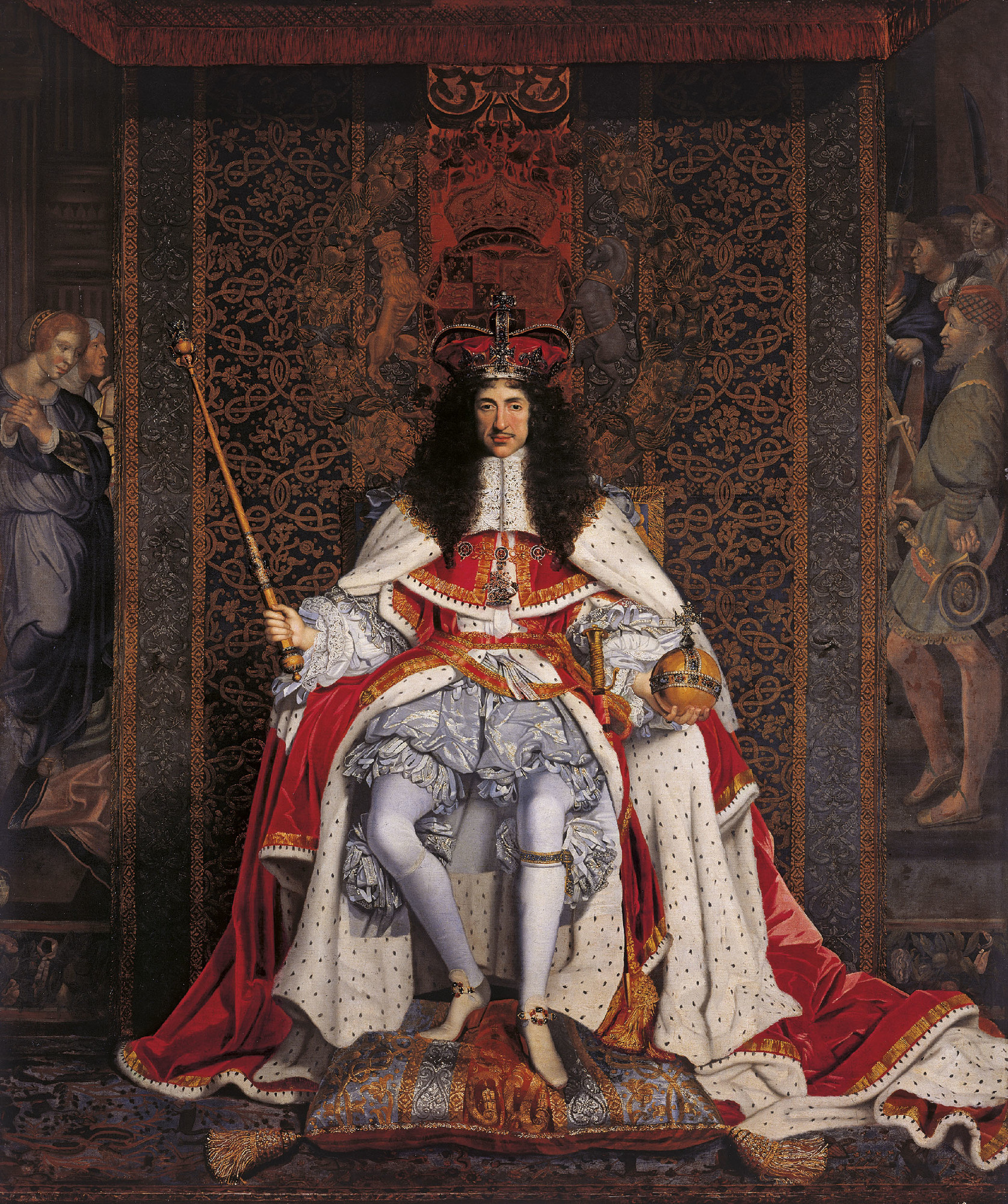
John Michael Wright, Portrait of Charles II, c. 1671-1676, oil on canvas, 281 x 239.2 cm (Royal Collection Trust)
In this portrait of Charles II, his extravagant attire not only reflects his power and status as the King of England but the masculine ideal of the period. His curly wig is long, his clothing is heavily ornamented with lace, embroidery, and ribbons, and he wears white hose and high heeled shoes — elements of dress that are today considered markers of femininity. It is such details that are often linked to gender (the cultural construction of identity that marks bodies as male, female or gender neutral). Given that these markers change over time and from place to place, a reading of the clues embodied in a sitter’s dress in a portrait must take into account the cultural norms of the period as well as the place in which the artwork was created. This oil portrait of one of the most beloved kings of England tells an interesting story of how markers of masculinity and femininity change over time.
What is Charles II wearing?
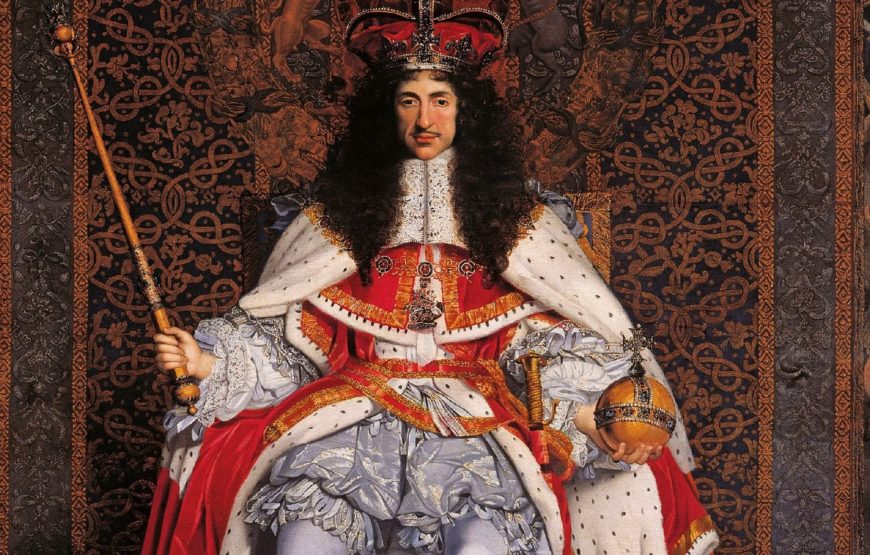
Scepter in his right hand, and orb in his left (detail), John Michael Wright, Portrait of Charles II, c. 1671-1676, oil on canvas, 281 x 239.2 cm (Royal Collection Trust)
The King of England wears the Crown of State on his head and holds in his hands the orb and scepter — symbols of his power. He is dressed in a costly and theatrical outfit suitable for a coronation. His Order of the Garter (the most senior order of knighthood in the British honors system) costume is made of cloth of silver and is topped with luxurious crimson red silk velvet robes lined with ermine that surround his body and pool to the floor. The sleeves of his white shirt are full and expansive with deep double cuffs of sumptuous lace. His fashionably wide petticoat breeches envelop his thighs in a mass of balloon-like folds and are ornamented with multiple rows of ribbon loops. His white stockings are held up with garters that explode in bunches of ribbon loops. His red heeled shoes are made of the finest kid leather and finished with buckles decorated with jewels.
Although this work by British artist John Michael Wright depicts the King’s coronation in 1661, scholars believe that it may have been painted several years later. Whether or not this portrait precisely reflects how Charles II looked that day, each element of his dress not only conveys his status and wealth, but also reflects the masculine ideal within England and France at that moment in history.
Men in heels
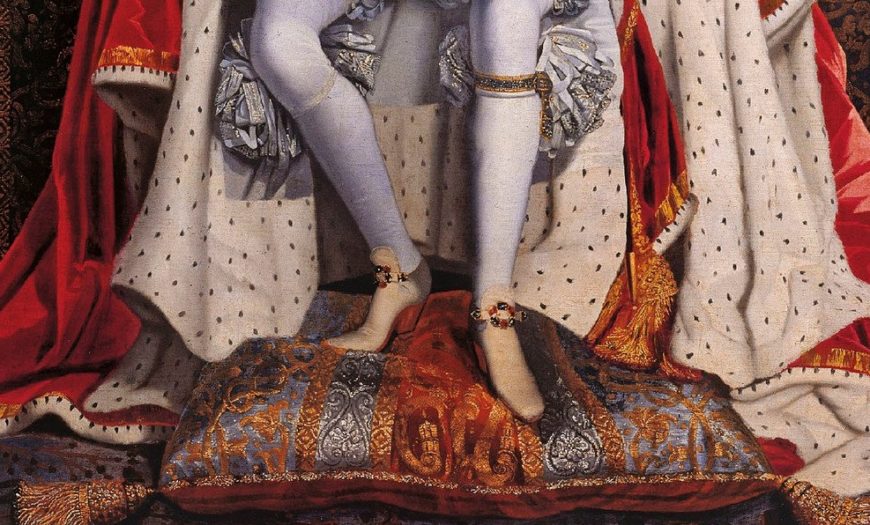
High-heeled shoes (detail), John Michael Wright, Portrait of Charles II, c. 1671-1676, oil on canvas, 281 x 239.2 cm (Royal Collection Trust)
In this portrait, Charles II wears high-heeled shoes. Although such footwear is typically associated with women’s attire today, it was actually men that first adopted the style in Europe at the turn of the seventeenth century as a fashionable symbol of power and prestige. According to Elizabeth Semmelhack, Senior Curator at the Bata Shoe Museum, “Even after they fell from men’s fashion in the 1730s, there were pockets of time when heels were reintegrated into the male wardrobe not as a way of challenging masculinity but rather as a means of proclaiming it.” [1]
The fashion for petticoat breeches
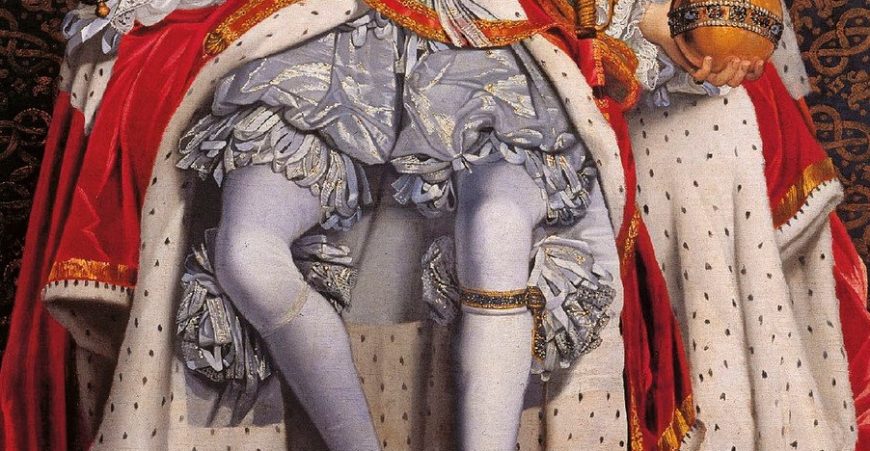
Breeches (detail), John Michael Wright, Portrait of Charles II, c. 1671-1676, oil on canvas, 281 x 239.2 cm (Royal Collection Trust)
The voluminous skirt-like silhouette created by petticoat breeches (also known as “rhinegraves” in continental Europe) were fashionable for men for a brief period in the mid-seventeenth century. The width of this style of breeches made them somewhat impractical, since the wearer had to alter their gait and swing their legs out as they walked to avoid entangling their legs in the folds of fabric and the ribbons.
According to the April 6, 1661 entry in the diary of Samuel Pepys, a Member of British Parliament, his friend, a Mr. Townsend, admitted to having one day accidentally put both his legs through one of his knees of his petticoat breeches, and worn them that way for the entire day. In spite of the practical difficulties, petticoat breeches were highly fashionable for elite men until October 1666 when Charles II introduced a new fashion for men by wearing a closer fitting style of breeches that accommodated a longer style of coat.
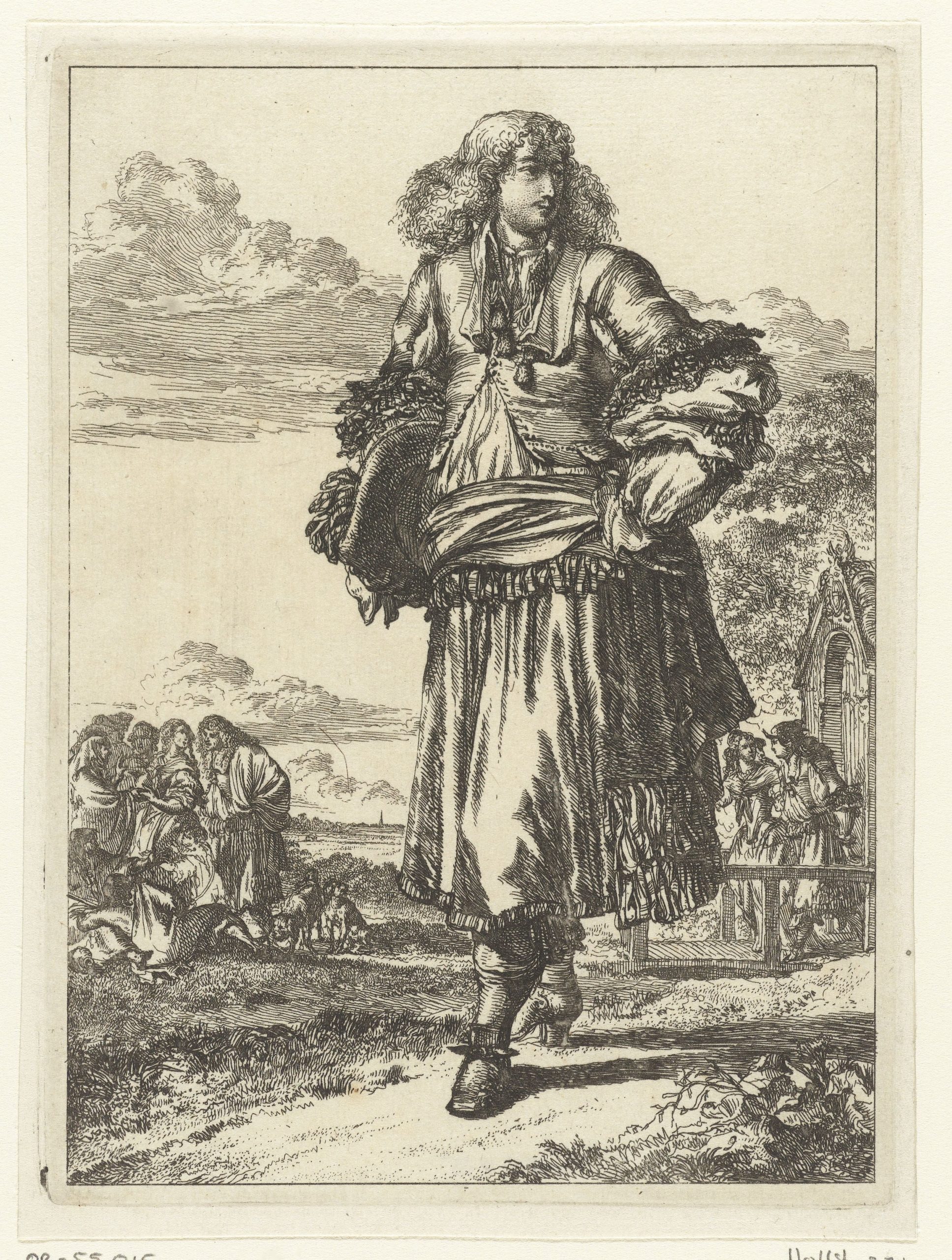
Romeyn de Hooghe, Figures à la Mode no. 9, Man Wearing Rhinegrave Breeches, 1670-1685, engraving, 16.6 x 12.3 cm, (Rijksmuseum, Amsterdam)
Reading the clues of dress
The way that a person is dressed in a portrait often conveys clues as to the sitter’s identity or status. Although the artist may have taken liberties in rendering their sitter more attractive than they were in real life or in dressing them in clothing that differed from what actually was worn, the manner in which the body is fashioned reveals something about the culture from which the work originated. In the coronation portrait of Charles II, he is dressed in a manner that today would be considered feminine. And yet, as this analysis has shown, his petticoat breeches, the ornate embellishment on his clothing, high heels and long hair were instead markers of power and status in his time. This reminds us that any particular item of clothing is not inherently masculine or feminine, instead it is culture that defines it thus.

